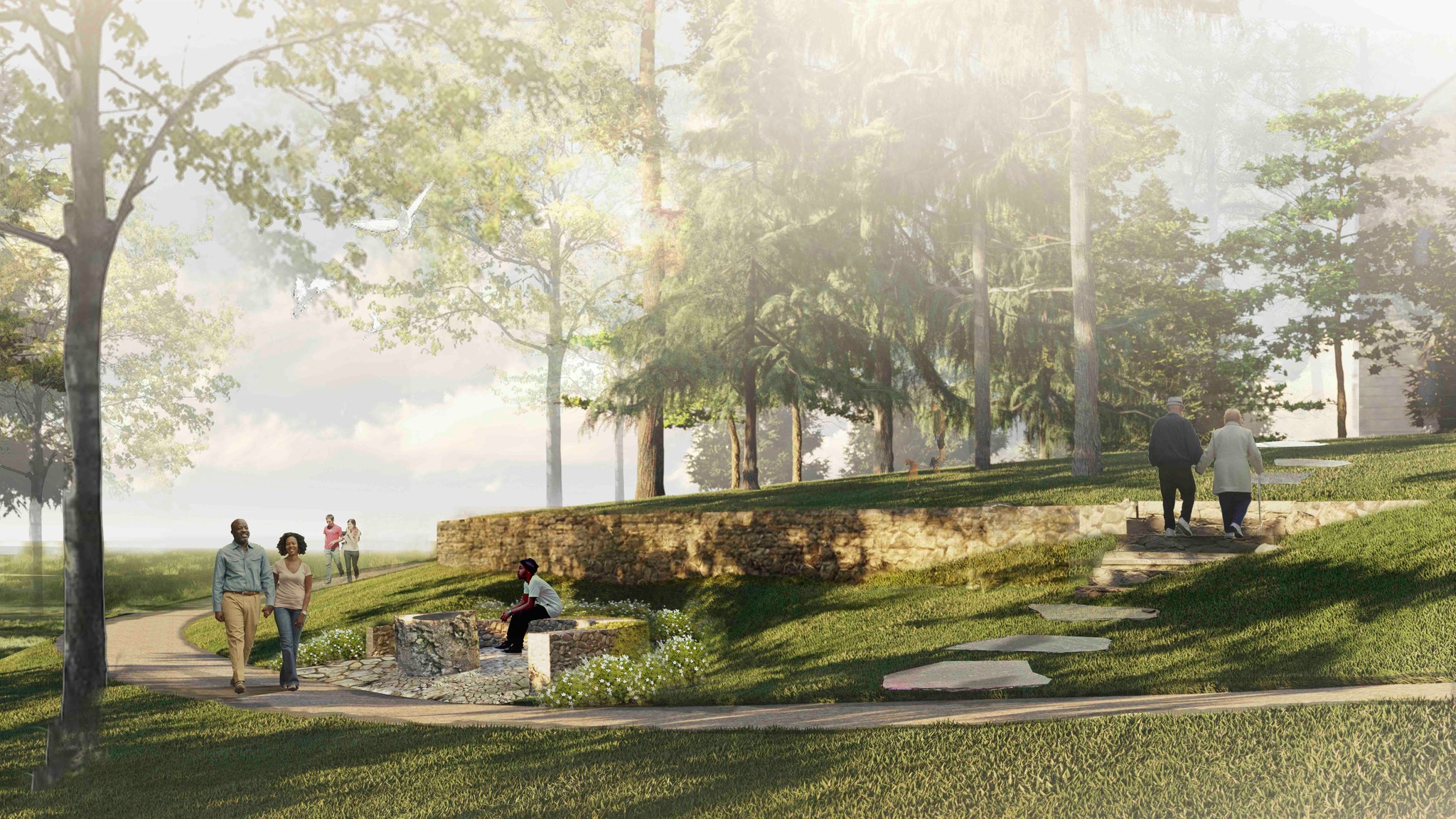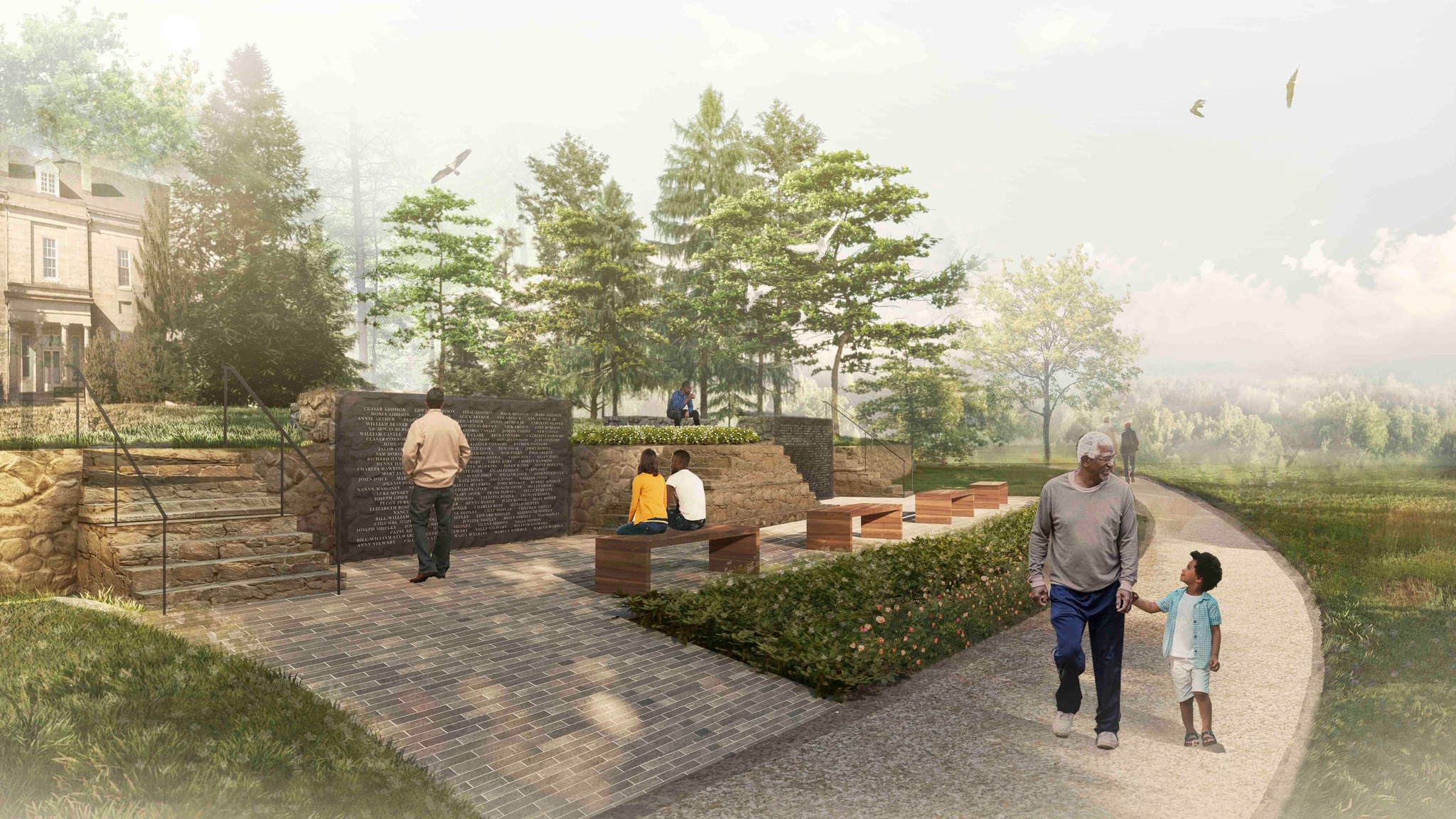
Image Credit: Mahan Rykiel Associates, Inc.
As a favorite granddaughter of Charles Carroll, the only Catholic signer of the Declaration of Independence, Emily Caton McTavish was gifted property known as Folly Quarter. In 1832 a retaining wall was completed leveling a shady hill on which a great neoclassical house of Woodstock granite was constructed. The house was named Carrollton Hall. It is along this wall that the memorial project depicted here will memorialize the people who were enslaved there. This project is one of the last efforts as part of the broader restoration of the property, which began in 2015 and is close to completion.

Image Credit: Mahan Rykiel Associates, Inc.
How the friars came to own this historic site:
In 1928, Folly Quarter was purchased by Friar Justin Figas, OFM Conv. to be used as a novitiate/seminary. The manor house became too small for our growing community, so in 1930, Friar Benedict Przemielewski, OFM Conv. was commissioned to design a new novitiate. He modeled it after the Sacro Convento, in Assisi. In 1995 our friars transformed the novitiate into The Shrine of St. Anthony of Padua and in 2004, Cardinal William Keeler created it as an “Archdiocesan Shrine.” In January 2015, Carrollton Hall was officially entered into the National Register of Historic Places!
NOTE: The CARROLLTON HALL HISTORIC SITE is an historic landmark, a house museum honoring the memories of ALL those who lived there and those who influenced our nation’s most valued heritage: Freedom of Religion. This fundamental human right of all people is also the guarantor of the health of a diverse society.
Images from the Mahan Rykiel Associates, Inc. Facebook post stating: “The Carrollton Hall Memorial project helps visitors understand the historic movements of the site – including a formal entry and curved retaining wall dating back to the second quarter of the nineteenth century, as well as a congregation area surrounding a well, that the then enslaved workers would have used. As part of the restoration, a series of walls provide an interpretive history of the property and memorializes the people who were enslaved there. “
